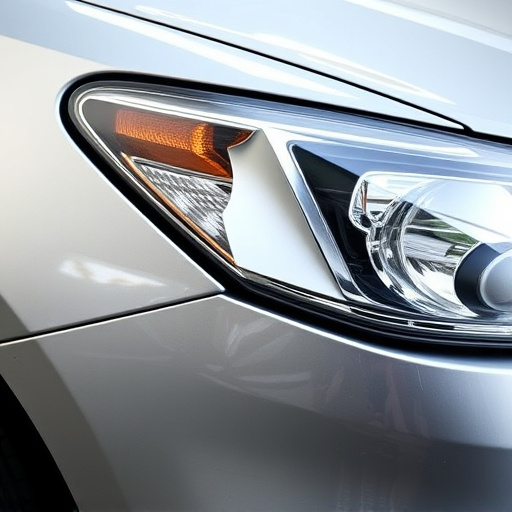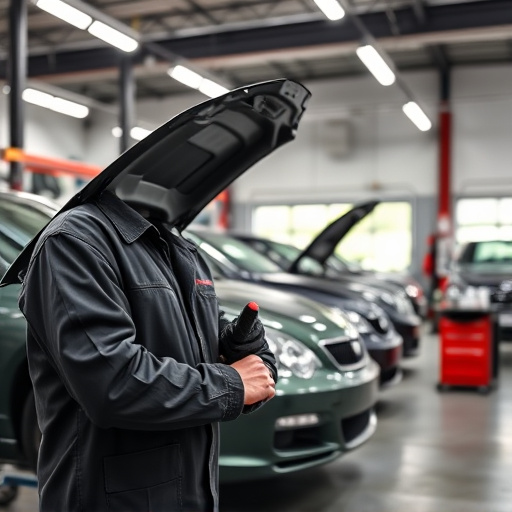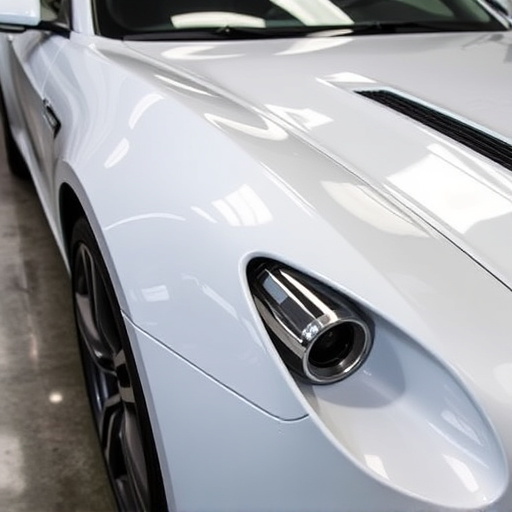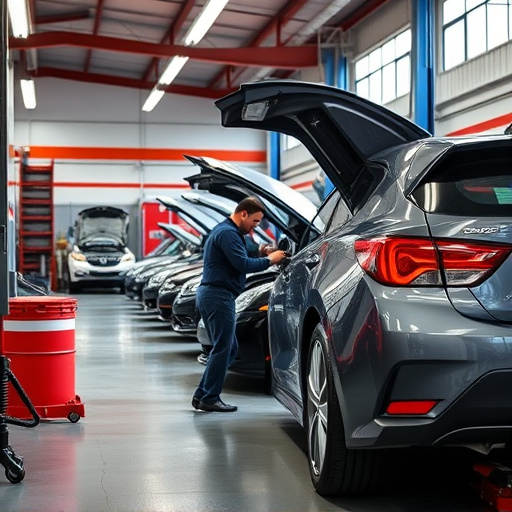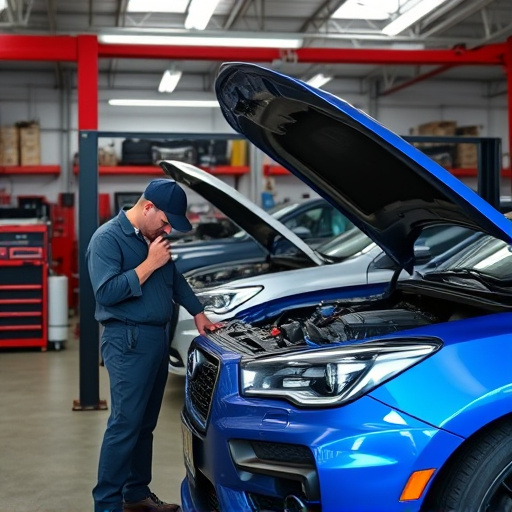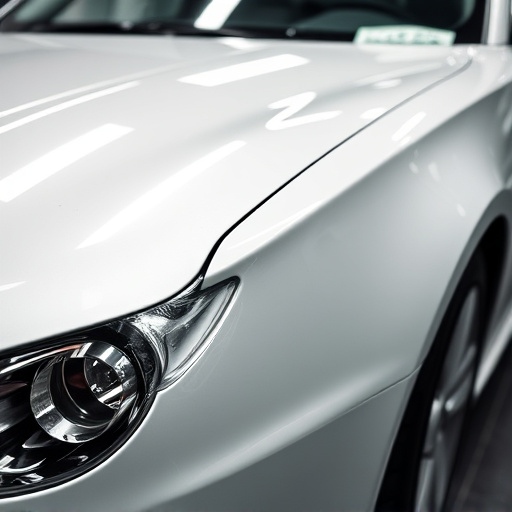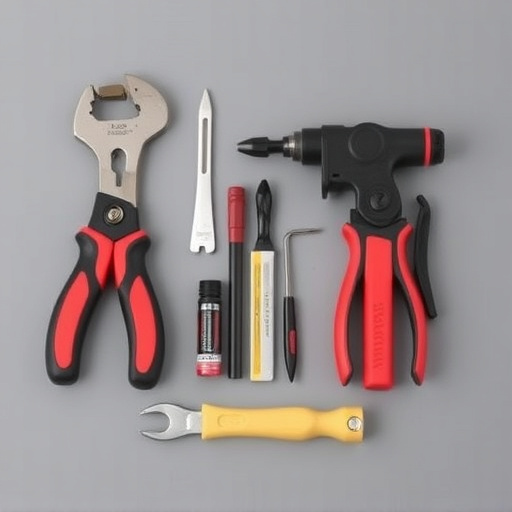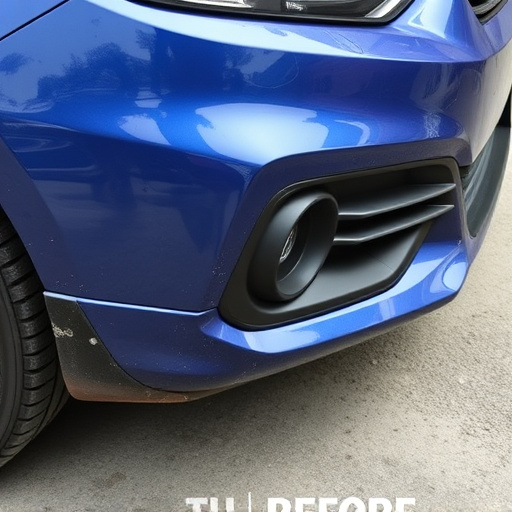Mercedes precision alignment is a specialized service using advanced tech and skilled technicians to calibrate wheels and suspension for optimal performance. Conducted in controlled environments post-accidents or hail damage, it restores vehicles to pre-incident conditions and prevents future issues. Temperature-controlled bays ensure accurate measurements, crucial for luxury cars sensitive to temperature variations, enhancing safety and reliability. To maximize benefits, maintain undamaged vehicles and use temperature-controlled bays for accurate Mercedes precision alignment.
Discover the transformative power of Mercedes precision alignment conducted in temperature-controlled bays. This cutting-edge process ensures your vehicle’s wheels are perfectly aligned, enhancing handling, safety, and tire longevity. Learn how controlled environmental conditions significantly improve alignment accuracy, making it a must-have service for any car owner. Explore best practices and tips to achieve optimal results, and understand the significant benefits of this advanced Mercedes precision alignment technique.
- Understanding Mercedes Precision Alignment Process
- Benefits of Temperature-Controlled Bays for Alignment
- Best Practices and Tips for Optimal Results
Understanding Mercedes Precision Alignment Process

Mercedes precision alignment is a meticulous process designed to ensure your vehicle’s wheels and suspension are perfectly balanced and aligned. This critical service involves advanced technology and highly skilled technicians who meticulously adjust various components, including camber, toe, and caster angles. By achieving optimal alignment, drivers can expect enhanced handling, improved tire life, and better overall performance.
This process is typically conducted in temperature-controlled bays at trusted auto collision centers, where the environment is optimized to prevent any adverse effects from external factors like weather changes or temperature fluctuations. This meticulous attention to detail is especially crucial after accidents or when dealing with hail damage repair, as it guarantees that your vehicle returns to its pre-incident condition. Moreover, regular precision alignment also serves as a proactive measure for vehicle body repair, mitigating potential issues down the line and keeping your ride safe and reliable on the road.
Benefits of Temperature-Controlled Bays for Alignment

In the realm of Mercedes precision alignment, temperature-controlled bays offer a multitude of benefits that enhance both the process and the final results. By maintaining a consistent and optimal environment, these specialized bays ensure that every aspect of the alignment is executed with meticulous care. This is particularly crucial for luxury vehicle repair, as even the slightest variance in temperature can affect the performance and aesthetics of high-end cars.
Moreover, temperature-controlled bays play a pivotal role in auto maintenance routines, especially when dealing with sensitive components. The controlled conditions mitigate the risk of thermal expansion or contraction, which could lead to inaccuracies in alignment. This precision is not just about visual appeal; it’s about ensuring the safety and reliability of your vehicle. Thus, for top-tier car repair services, these bays are an indispensable asset, facilitating precise alignments that contribute to the longevity and optimal performance of luxury vehicles.
Best Practices and Tips for Optimal Results

To achieve optimal results from a Mercedes precision alignment, it’s essential to follow best practices. First and foremost, ensure that the process is conducted in temperature-controlled bays, as extreme temperatures can affect the car’s structural integrity. This is particularly important for luxury vehicles like Mercedes, which have sophisticated metalwork and finishes. Maintaining consistent ambient conditions guarantees accurate measurements and ensures the alignment is both efficient and effective.
When it comes to preparing your vehicle for precision alignment, consider these tips. Avoid any recent car dent removal or fender bender repairs until after the alignment is complete. While a car body shop can handle these issues, the high-precision nature of Mercedes alignment requires that the vehicle be in its original, undamaged state. This includes no temporary patches or quick fixes; the goal is to align the vehicle to factory specifications, so any previous damage should be addressed beforehand for the best outcome.
Mercedes precision alignment, conducted in temperature-controlled bays, offers significant advantages in ensuring optimal vehicle performance. By maintaining consistent environmental conditions, these bays enhance accuracy and efficiency during the alignment process. Following best practices and utilizing tips for optimal results, automotive professionals can deliver superior service, ensuring Mercedes vehicles return to their ideal handling characteristics. This specialized technique is a game-changer in the industry, setting new standards for precision and customer satisfaction.

